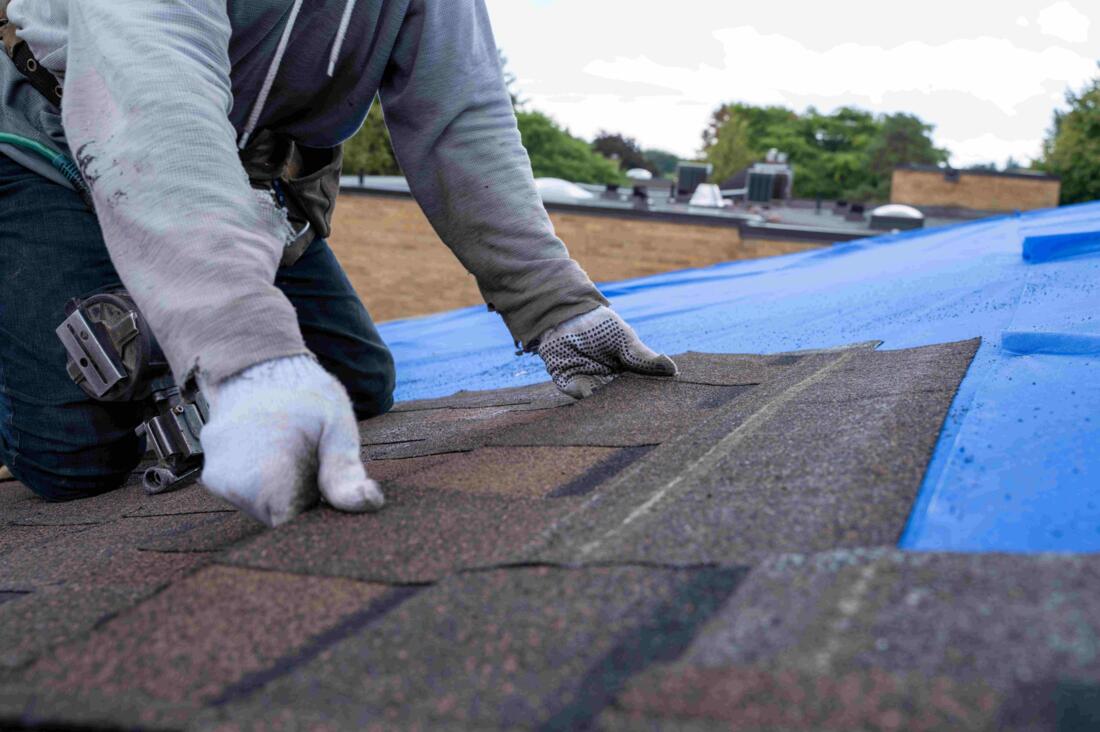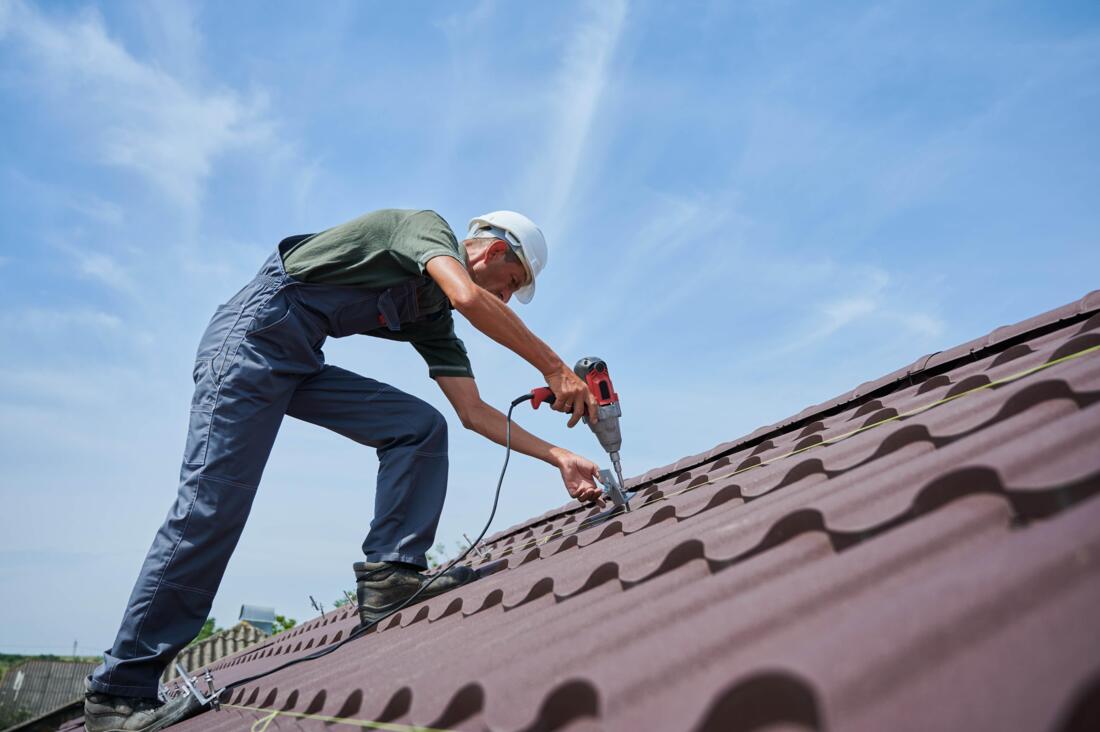The installation of a cool roof improves energy efficiency by reflecting more sunlight and absorbing less heat. This reduces the demand for air conditioning, resulting in lower energy costs, reduced greenhouse gas emissions, prolonged roof life, and helps combat urban heat islands. This has positive effects for both homeowners and the environment.
Cool Roofs: Saving Energy and Costs
Improving the energy efficiency of your home is essential for decreasing your environmental impact and cutting energy expenses. A unique method to accomplish this is by putting in a cool roof. These roofs are crafted to deflect sunlight and retain less heat compared to regular roofs by utilizing reflective coatings, tiles, or shingles. By being reflective, they assist in maintaining a cooler indoor temperature during the summer, lessening the reliance on air conditioning and reducing energy usage. This leads to notable savings on cooling expenses for homeowners while also aiding in reducing urban heat islands, which can have adverse effects on communities by raising temperatures.

Benefits
Cool roofs offer advantages that go beyond mere cost reduction and enhanced comfort. Through their energy-saving properties, they contribute to a decrease in power consumption, thereby lowering greenhouse gas emissions and pollutants created by power stations. This is especially critical in crowded urban regions where air quality is a major health concern. Moreover, cool roofs have the dual benefit of prolonging the lifespan of roofs and air conditioning systems by minimizing heat-related damage. This enhanced durability leads to additional financial savings and reduced maintenance requirements.

Getting Started
To begin with a reflective roof, homeowners should take into account various aspects such as the climate in their location, the current roofing material, and the general state of their roof. Expert roofers can offer evaluations and suggestions customized to individual requirements and adhering to local construction regulations. Opting for a reflective roof is not just a wise financial choice but also a forward-thinking move towards a greener and more effective home. With the chance for instant and lasting savings, as well as the environmental advantages, a reflective roof is a valuable option for any homeowner aiming to improve their home's energy efficiency and lessen their environmental footprint.
Understanding the Different Types of Cool Roofs
Cool roofs come in several varieties, each designed to meet specific needs and preferences. These include reflective coatings, which can be applied to existing roofs, and specially designed shingles or tiles that inherently reflect more sunlight. Additionally, green roofs, which incorporate vegetation, can also contribute to cooling, albeit in a different manner. Homeowners may choose a type based on their budget, aesthetic preferences, and the local climate. By understanding the options available, homeowners can make informed decisions that align best with their energy-saving goals while enhancing the home's visual appeal.
The Role of Cool Roofs in Urban Planning
Cool roofs play a significant role in urban planning efforts aimed at creating sustainable cities. As urban areas continue to grow, the heat generated from buildings and vehicles contributes to the urban heat island effect, increasing temperatures and energy demands. By implementing cool roof policies, city planners can mitigate these effects, leading to more comfortable living conditions and lower energy costs citywide. Cool roofs not only reduce individual building energy use but also improve overall urban air quality, fostering healthier environments for residents. This holistic approach to urban design highlights the importance of integrating green technologies into city infrastructure.
Cost Considerations for Installing a Cool Roof
While the long-term savings and environmental benefits of cool roofs are clear, it's essential to consider the initial installation costs. Homeowners should evaluate their budget, potential financing options, and available incentives, such as tax credits or rebates, that can offset expenses. Additionally, the type of cool roof selected can affect the overall investment; for example, applying a reflective coating may be less expensive than replacing an entire roof with new materials. Understanding these cost dynamics allows homeowners to make financially responsible decisions while still reaping the benefits of improved energy efficiency.
Maintenance Tips for Cool Roof Longevity
To ensure that a cool roof maintains its efficiency and longevity, regular maintenance is vital. This includes routine inspections for signs of wear and tear, such as cracks or peeling in reflective coatings, as well as cleaning debris that may accumulate on the surface. Keeping the roof clear of obstructions helps ensure maximum reflectivity and energy efficiency. Homeowners should also consider scheduling professional assessments periodically, as trained experts can identify potential issues before they escalate. By committing to ongoing maintenance, homeowners can maximize the investment in their cool roof while enjoying its energy-saving benefits for years to come.
Community Initiatives Promoting Cool Roofs
Various community initiatives are being launched across the globe to promote the installation of cool roofs as part of broader sustainability goals. These programs often involve partnerships between local governments, non-profit organizations, and private sector stakeholders, aiming to increase awareness and provide resources for homeowners. Workshops, incentive programs, and informational campaigns are common components of these initiatives, helping to educate residents on the benefits of cool roofs. By fostering a sense of community involvement, these efforts not only enhance individual homes but also contribute to the collective well-being of neighborhoods, promoting healthier living environments for all.
Future Trends in Cool Roofing Technologies
The future of cool roofing technologies looks promising, with ongoing research and innovation aimed at enhancing energy efficiency and sustainability. Advances in materials science are leading to the development of more effective reflective coatings and roofing materials that can adapt to various environmental conditions. Furthermore, smart roofing technologies may soon integrate sensors to monitor temperature and energy performance in real-time, providing homeowners with actionable insights. As awareness of climate change grows, these innovations will be crucial in promoting energy-efficient practices, ultimately contributing to a more sustainable future for both residential and commercial buildings.
AI-Assisted Content Disclaimer
This article was created with AI assistance and reviewed by a human for accuracy and clarity.